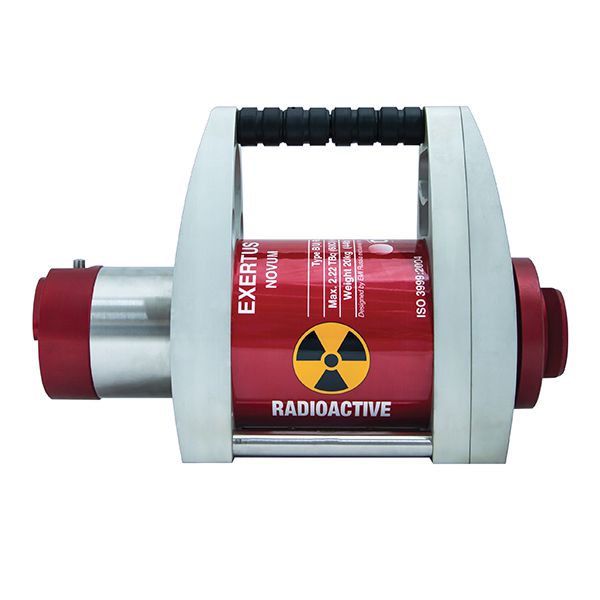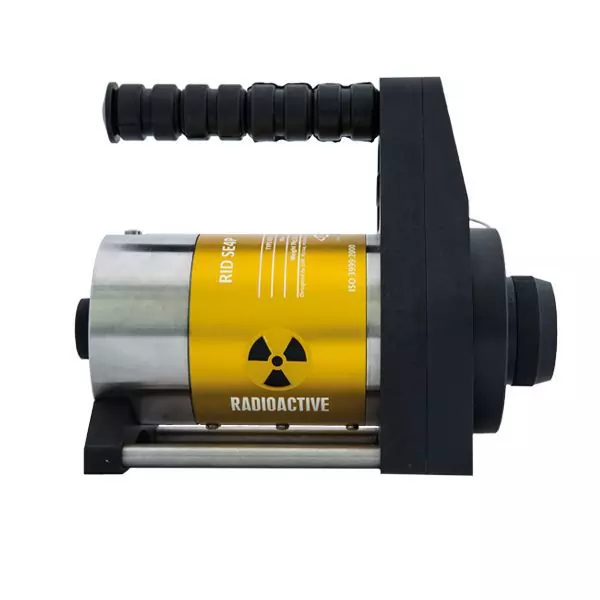Gamma radiography
Gamma radiography is a method of applying radioactive isotopes to detect internal defects and inhomogeneities in the material. Small changes in the thickness or density of the material have a significant effect on the strength of the penetrating radiation, therefore inhomogeneities are shown in the radiographic image as lighter or darker areas on the film.
For the purpose of industrial defectoscopy, radioactive radiation has been used since 1928. At first, the natural isotope Radium was used exclusively, while today selenium (Se-75), Iridium (Ir-192) and Cobalt (Co-60) are most commonly used. Artificial radioactive isotopes can be produced in various standard dimensions and activities, in accordance with the test items, as well as the devices with which the test is performed (defectoscope). When selecting gamma sources, the type and thickness of the tested sample, the half-life of the radio isotope, the available activities and the dimensions of the radioactive sources should be taken into account.
Defectoscopes from Oserix, Belgium, you can see in more detail below, and more about the manufacturer on oserix.com. Quark also delivers radioactive isotopes, with or independently of the device, within the appropriate capsules, protective holders and transport containers, all in accordance with the legal regulations that define this area.






